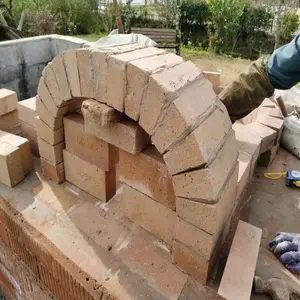
Refractory Brick Reputable Factory Durable Alumina Brown Clay Brick Fire Brick Manufacturers Refractory Products Firebrick 7-13



















Alumina brick, a pivotal category within the refractory materials sector, stands out for its exceptional thermodynamic properties. These bricks are synthesized by incorporating alumina into the base material, which significantly enhances their ability to withstand high temperatures. This introduction aims to delve into the various aspects of alumina bricks, including their types, applications, and intrinsic features.
The refractory market offers a diverse range of alumina bricks, each tailored for specific conditions and uses. High alumina refractory bricks and alumina silica refractory brick are two prominent types, known for their robust performance in extreme environments. The former contains a higher percentage of alumina, which translates to better resistance to heat and wear. Meanwhile, the latter combines silica and alumina to create a balanced product suitable for various industrial applications.
The versatility of alumina bricks is evident in their wide range of applications. High alumina fire brick is commonly employed in the construction of fireplaces and chimneys due to its excellent flame retardant properties. In industrial settings, alumina lining brick is used to insulate kilns and furnaces, optimizing their efficiency and longevity. Additionally, alumina bubble brick is utilized in more specialized scenarios, such as in the concealment of catalysts and as packing material in metal furnaces.
Alumina bricks boast a suite of features that make them a preferred choice in high-temperature environments. Their ability to maintain structural integrity under thermal stress is unparalleled. Moreover, alumina magnesia carbon brick introduces elements like magnesia into the mix, offering enhanced corrosion resistance, particularly in steel-making processes. The inclusion of high alumina clay in these bricks further contributes to their overall durability and performance.
The composition of alumina bricks is carefully engineered to meet stringent industry standards. A significant component is high alumina mortar, which binds the brick's structure and imparts high-temperature resistance. Innovations such as magnesia alumina spinel bricks have introduced a blend of materials that provide superior thermal shock resistance and structural flexibility, making them suitable for a variety of demanding applications.
Selecting the appropriate alumina brick requires a thorough understanding of the specific demands of the application. Factors such as temperature exposure, chemical aggressiveness of the environment, and mechanical stress should guide the choice. While the alumina bricks price is a consideration, it is the alignment of the brick's properties with the application's requirements that ensures optimal performance.